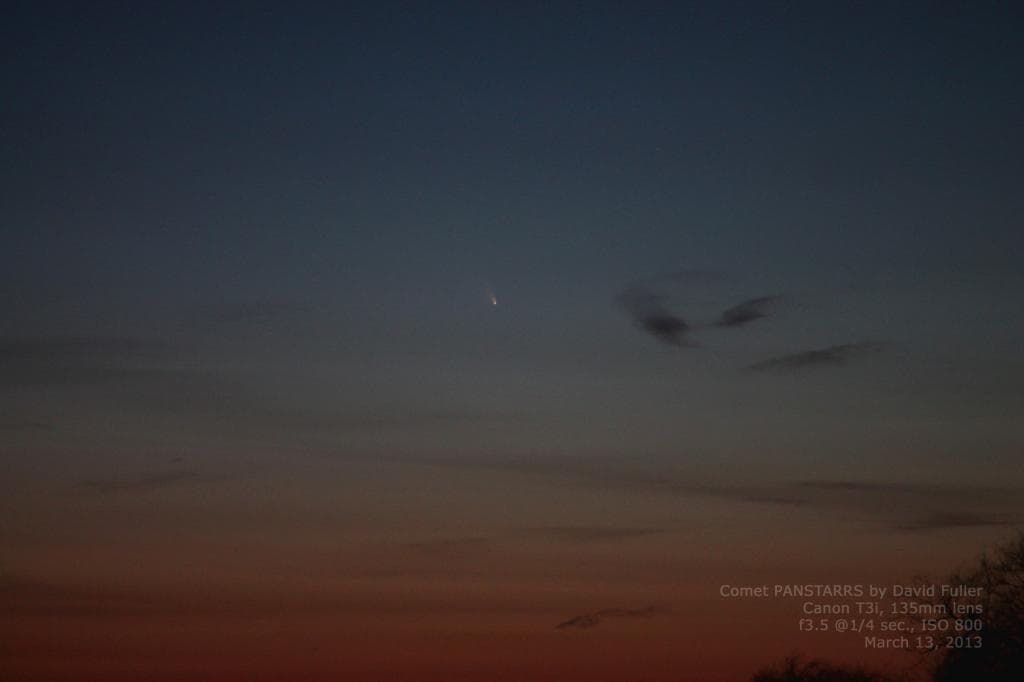
with David Fuller

Comet PANSTARRS makes a point... the other way
Last week, Comet PANSTARRS was at it's brightest magnitude. That doesn't imply that it was necessarily easy to see; that's largely due to where it is in relation to both the Sun and where Earth is, keeping it close to the glow of twilight.
When comets orbit the sun, if they create a tail, it generally points away from the Sun. On March 13, I caught a picture of the comet, with it's ~1.5 degree tail aimed slightly towards the south:

Last night the equation changed. It was the first clear night I'd had since the 13th, and despite the brutally cold conditions (30F, but with 15 to 20 mph winds!), I bundled up to see what I could capture almost a week later. The magnitude was supposed to have dropped by 1.2 magnitudes, though that's just the predicted drop. When I arrived at my "flat western horizon" location, it was 30 minutes past. I had learned from my previous opportunity to capture the comet on the 13th not to get there too soon!
Because of the cold and wind, I began by searching from my car, with binoculars. A few times I stepped outside, but since the wind was from the west (the direction I was looking), my eyes would tear up almost immediately, as the cold air wrapped around the binocular eyepieces and struck my eyeballs. I finally figured out how to block most of the wind by holding my hands cupped around the eyepieces while still maintaining a grip on the optics. Awkward, but effective - well, for holding them. The comet was not to be found that way.
I decided I needed to start with the camera. By this time, it was almost an hour past sunset, and I knew that I would be losing the comet altogether in another half hour. I decided to use the 135mm lens for the best comet image size while still being able to focus and see other distant objects for perspective, like trees. I caught this image close to 8:00 pm. As you can see the comet's tail has started pointing the other way, as it has passed where the Sun set in the west, and has itself moved north. And the tail has followed suit, with a northerly tilt to it.

I never got those kinds of images with Hale Bopp or Hyakutake, so despite the poor location of Comet PANSTARRS for viewing, for photos it has made itself useful in the respect of showing how the tail changes it's orientation over time.
EDIT/UPDATE: I guess I should point out that the reason the comet looks larger in the picture below despite the same focal length lens is because the picture above is uncropped; the one below, cropped. So... there ya go.
